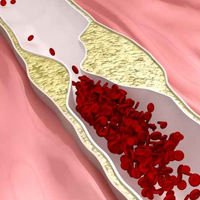Article
Outcomes from EVOLVE II Trial: Coronary Stent System
Author(s):
Results from the pivotal US trial of an everolimus-eluting bioabsorbable polymer-coated stent, the Boston Scientific SYNERGY coronary stent system, indicate that it performs just as well as existing alternatives.

A presentation at the American Heart Association (AHA) Scientific Sessions 2014 discussed results of the first successful US trial of a bioabsorbable everolimus-eluting bioabsorbable polymer stent, the Boston Scientific SYNERGY coronary stent system.
According to Dean J. Kereiakes, MD, The Christ Hospital Heart and Vascular Center, The Linden Research Center, Cincinnati, OH, durable polymers have long been linked to hypersensitivity, delayed healing, and incomplete endothelialization, which potentially contribute to increased risk of late stent thrombosis and the necessity for prolonged dual antiplatelet therapy.
The SYNERGY stent, a thin-strut, platinum chromium metal alloy platform was specifically designed to improve flexibility, radiopacity, radial strength, and fracture resistance compared to existing stents.
Kereiakes and his team compared SYNERGY everolimus-eluting stent (EES) to the durable polymer PROMUS Element EES in a large-scale, multicenter, multinational, prospective, single-blind randomized controlled pivotal trial for regulatory approvals.
A total of 1684 patients were randomized at 125 sites in North America, Europe, Australia, New Zealand, Japan, and Singapore, from November 2012 and August 2013. The average patient age was 63.7 years; 28.4% were women, 30.9% had medically treated diabetes, and 34.3% were presented with unstable angina. Additionally, the average length of the lesion was 13.9 mm.
According to study results, “The primary endpoint was target lesion failure, composite occurrence of ischemia-driven target lesion revascularization, target vessel related MI, or cardiac death, to 12 months.”
Despite both the study population’s clinical and angiographic complexity, probable stent thrombosis rates were reported low, and definite ST wasn’t observed beyond the 24-hour mark.
Kereiakes said, “The one-year data from the EVOLVE II Trial, particularly the exceptionally low stent thrombosis rate, are encouraging because this is a complex patient population. Having a bioabsorbable polymer stent with this type of performance is important to physicians and health care systems. In addition, there is great enthusiasm for a product that is very deliverable and user-friendly. From an operator perspective, the SYNERGY Stent makes cases easier."
The study concluded “the SYNERGY stent proved non-inferior to the Promus Element Plus stent for TLF at one year.”
Additionally, it was noted that the SYNERGY stent’s longer-term relative safety and efficacy are still under review.



